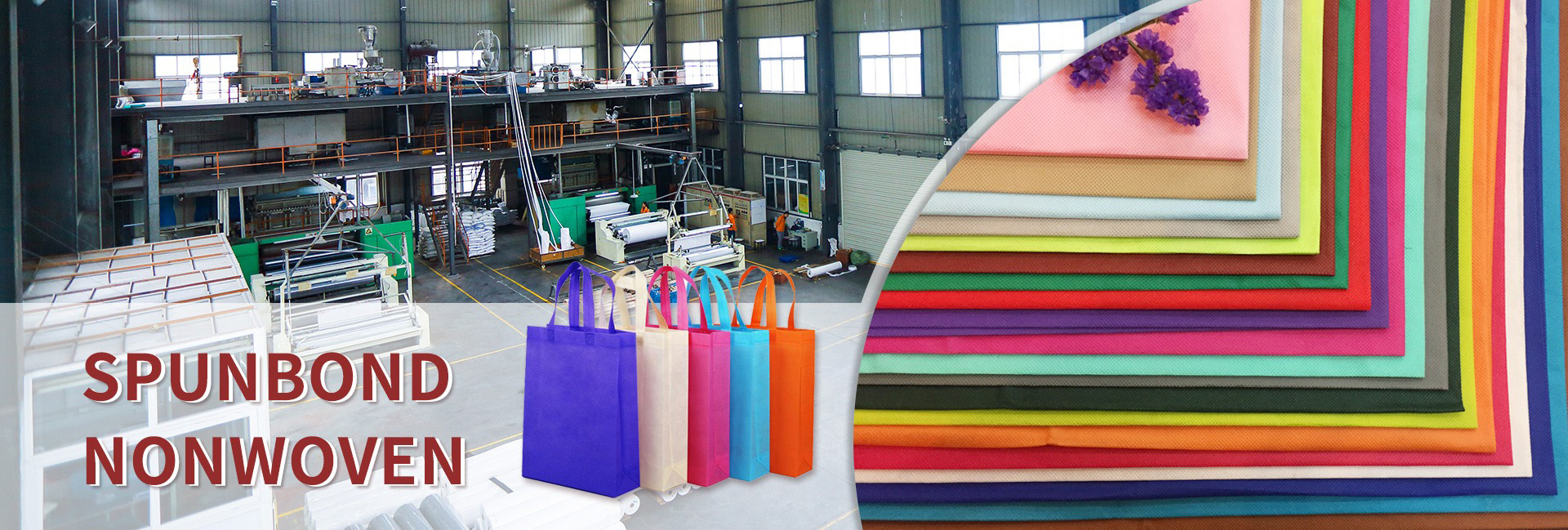When selecting modifiers for spunbond nonwoven fabric raw materials, the following logic should be followed: “prioritizing core needs of the application scenario → adapting to processing/environmental constraints → balancing compatibility and cost → achieving compliance certification,” precisely matching performance requirements with actual application conditions.
Identify the Core Needs of the Scenario (Determine the Functional Direction of the Modifier)
First, clarify the most critical performance requirements of the scenario and eliminate secondary factors.
If the core requirement is “tear resistance/damage resistance”: Prioritize toughening agents (POE, TPE) or inorganic fillers (nano-calcium carbonate).
If the core requirement is “anti-adsorption/antistatic”: Focus on antistatic agents (carbon nanotubes, quaternary ammonium salts).
If the core requirement is “sterile/bacterial”: Directly select antibacterial agents (silver ions, graphene).
If the core requirement is “environmentally friendly/degradable”: Focus on biodegradable agents (PLA, PBA).
If the core requirement is “fire retardant/high temperature resistance”: Prioritize flame retardants (magnesium hydroxide, phosphorus-nitrogen based).
Refine the requirements based on the specific usage details of the scenario.
For reusable/repeatedly disinfected scenarios: Select washable, long-lasting modifiers (such as polyether-based antistatic agents, phosphorus-nitrogen based flame retardants).
For low-temperature/high-temperature environments: Select temperature-adaptive modifiers (for low-temperature use). EVA (High-Temperature Nano-Silica)
Skin Contact Scenarios: Prioritize skin-friendly, low-irritation modifiers (quaternary ammonium salts, PLA blends)
Adapting to Processing and Environmental Constraints (Avoiding Selection Failure)
Matching Substrate Processing Characteristics
Polypropylene (PP) Substrate: Prioritize POE, TPE, and nano-calcium carbonate; processing temperature suitable for 160-220℃, good compatibility
Polyethylene (PE) Substrate: Suitable for EVA and talc; avoid blending with excessively polar modifiers (such as some antibacterial agents)
Degradable Substrate (PLA): Select PBA and PLA-specific toughening agents to avoid compromising degradation performance
Meeting Environmental and Usage Conditions
Sterilization Scenarios (Ethylene Oxide / High-Temperature Steam): Select sterilization-resistant modifiers (POE, nano-calcium carbonate; avoid easily decomposable organic antibacterial agents)
Cold Chain / Low-Temperature Scenarios: Select EVA and TPE with good low-temperature toughness; avoid modifiers that cause low-temperature embrittlement
Outdoor / Long-term storage scenarios: Choose aging-resistant talc and carbon nanotubes to improve stability.
Balancing compatibility and cost (ensuring feasibility)
Verify the compatibility of the modifier with the substrate.
Avoid affecting processing flowability after addition: For example, the addition amount of inorganic fillers should not exceed 5%, and the addition amount of elastomer modifiers should not exceed 3%. Do not sacrifice the performance of the core substrate: For example, when adding PLA modifiers to PP substrates, the addition amount should be controlled at 10%-15%, balancing toughness and heat resistance.
Prioritize cost:
Low-cost scenarios (e.g., ordinary medical care pads): Choose cost-effective modifiers such as talc, EVA, and magnesium hydroxide.
Mid-to-high-end scenarios (e.g., precision instrument packaging, high-end dressings): Choose higher-performance modifiers such as carbon nanotubes, graphene, and silver ion modifiers.
Mass production scenarios: Prioritize modifiers with low addition amounts and stable effects (e.g., nano-level fillers, an addition amount of 1%-3% is sufficient).
Confirm compliance certification requirements (avoiding compliance risks)
Medical scenarios must meet the corresponding industry standards.
Contact devices/wound scenarios: Modifiers must pass ISO certification. 10993 Biocompatibility Testing (e.g., silver ions, PLA)
Export Products: Must comply with REACH, EN 13432, and other regulations (avoid modifiers containing phthalates; prioritize halogen-free flame retardants and biodegradable modifiers).
Food Contact Scenarios (e.g., sampling swab packaging): Select food-grade certified modifiers (e.g., food-grade nano-calcium carbonate, PLA).
Common Scenarios and Selection Examples (Direct Reference)
Medical Sterilization Instrument Packaging (Core: Tear Resistance + Sterilization Resistance + Compliance): POE (addition amount 1%-2%) + Nano-calcium Carbonate (1%-3%)
Operating Room Instrument Liners (Core: Antistatic + Anti-slip + Skin-friendly): Carbon Nanotubes (0.5%-1%) + Quaternary Ammonium Salt Antistatic Agent (0.3%-0.5%)
Biodegradable Medical Care Pads (Core: Environmental Protection + Tear Resistance): PLA + PBA Blend Modifier (addition amount…) 10%-15%)
Low-temperature cold chain vaccine packaging (core: low temperature resistance + breakage prevention): EVA (3%-5%) + talc (2%-3%)
Infectious disease protective equipment (core: antibacterial + tensile strength): silver ion antibacterial agent (0.5%-1%) + POE (1%-2%)
Dongguan Liansheng Non woven Technology Co., Ltd. was established in May 2020. It is a large-scale non-woven fabric production enterprise integrating research and development, production, and sales. It can produce various colors of PP spunbond non-woven fabrics with a width of less than 3.2 meters from 9 grams to 300 grams.
Post time: Nov-14-2025

